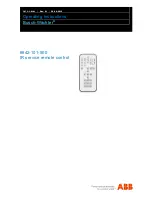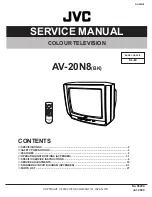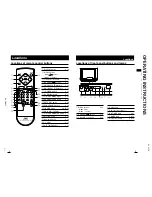
4. OPERATION
4.1.
Ensure that the LSTART battery is fully charged. The unit can only be used with the battery status bar showing green or yellow.
DO NOT
attempt to start a vehicle if the status bar shows a lower charge than yellow, or if the flashing red 'battery low' light (fig.2.2)
is showing.
4.2.
Starting Procedure (partly discharged vehicle battery):
4.2.1. Ensure the battery terminals on the vehicle to be boosted are free from corrosion and grease.
4.2.2. Insert the booster cable plug (fig.4.1.b) into the booster connection (fig.3.1) on the right hand side of the unit.
4.2.3. Connect the positive (+ RED) clip (fig.4.1.a) onto the positive (+ RED) terminal of the battery.
4.2.4. Connect the negative (- BLACK) clip to a good earth point (the braid from the engine to the vehicle chassis is ideal). If none can be
found, connect to the negative (- BLACK) terminal of the battery.
4.2.5. When good connections have been established press and hold the Power button (fig.1.1) until the battery status bar (fig.1.2) lights.
NOTE:
If the LSTART
is cross-connected to a battery, the red SOS/Jump Start (fig.1.4) and white (fig.1.5) LED's on the front panel will flash
alternately. If this occurs, press the Power button to switch off, and correct the connections to the battery, then press and hold the Power
button again until the battery status bar lights. Proceed to 4.2.6.
4.2.6. Press the Jump Start button (fig.1.3), if the SOS/Jump Start LED is illuminated, proceed to 4.2.7. If there are no LED's illuminated, this
indicates that the battery is either less than 2V or damaged/faulty, proceed to 4.3.
4.2.7. Turn the vehicle's starter over until the engine starts, the LSTART
will switch off after cranking for 5 seconds; if the vehicle has not
started within this time, repeat from step 4.2.6. above.
4.2.8. If the vehicle has started successfully, remove the clips from the battery as soon as possible (remove negative clip first).
4.3.
Starting Procedure (heavily discharged vehicle battery):
4.3.1. The leads from the LSTART under normal circumstances remain inert until connected to a battery containing 2V or more.
4.3.2. If connected to a battery with less than 2V, neither the red SOS/Jump Start LED nor the white LED will illuminate when the Jump Start
button is pressed.
4.3.3. To energise the output manually, hold the Jump Start button (fig.1.3) and Light/SOS button (fig.1.6) simultaneously for 3 seconds until
the red SOS/Jump Start LED flashes.
NOTE:
The clamps will be live in this condition; ensure that they are connected to a battery before activating.
4.3.4. Turn the vehicle's starter over until the engine starts, the LSTART
will switch off after cranking for 5 seconds; if the vehicle has not
started within this time, repeat from step 4.3.3. above.
4.3.5. If the vehicle has started successfully, remove the clips from the battery as soon as possible (remove negative clip first).
4.3.6.
If after following the above procedures, the vehicle has still failed to start and the red and white LED's on the front panel are flashing
alternately, the battery is potentially short circuiting. It
MUST
be replaced.
NOTE:
These boosters are capable of starting a vehicle without a battery in place, but
WILL NOT
start a vehicle fitted with a faulty or
damaged battery (as opposed to a discharged battery), regardless of using the above procedures. If the battery is faulty or damaged,
it
MUST
be replaced.
4.4.
Using as a Power Supply:
4.4.1.
The LSTART
can
be used as a portable power supply for 5V applications.
4.4.2.
5V:
The 5V USB socket (fig.1.8) will accept a standard USB plug enabling the provision of electrical power to electronic equipment
requiring a 5V DC supply up to a maximum of 2A.
4.4.3. Connect the USB plug to the USB socket and press the power button to energize the supply.
4.5.
Recharge the LSTART fully after use
(see section 3).
4.6.
Additional Features:
4.6.1. LED work lights are provided on both sides of the LSTART
(figs: 1.5, 2.3 & 3.2).
4.6.2. To switch side lights on first press the Power button and then press and hold the Side Light button (fig.1.7):
1st press:
Left light
2nd press:
Right light
3rd press:
Both lights
4th
press:
Off
4.6.3. The Light/SOS button has the following functions, having pressed the Power button:
1st press:
Tests the red SOS Start LED (fig.1.4)
2nd press:
Tests the white warning LED
3rd press:
Flashes both red SOS Start LED and white warning LED alternately to test the jump start fault
indication
4th press:
Off
3. CHARGING INSTRUCTIONS
3.1.
The LSTART will need charging when the indicator (fig.1.2) is lit only in the amber section to the left of the bar or when the red
'battery low' lamp (fig.2.2) is lit.
3.2.
Using the Mains Charger.
The unit can be charged from 230V mains using the AC/DC Adaptor. Plug the pin jack (fig.4.2.a) into the
charging socket (fig 2.1), then connect charger (fig.4.2.b) to 230V AC mains supply.
The battery status bar (fig.1.2) will illuminate to show the level of charge. When the indicator shows a full charge (being lit to the
green section to the right of the bar), disconnect the charger.
DO NOT
use any other charger than the one supplied with the LSTART as this could result in damage to the unit which will not be
covered
by
warranty.
3.3.
Using the 12V DC Charger.
Similarly, plug the pin jack (fig.4.3.a) into the charging socket and connect the adaptor (fig.4.3.b) into a
12V DC accessory socket. Disconnect when the indicator shows a full charge has been attained.
3.4
.
DO NOT
attempt to use the LSTART
whilst being charged.
3.5.
DO NOT
charge the LSTART in ambient temperatures lower than +3°C or higher than +40°C.
Original Language Version
© Jack Sealey Limited
LSTART235, LSTART405 Issue No: 5(SP) - 13/07/14





















